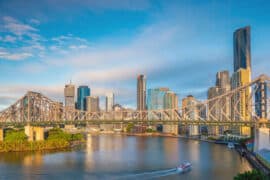Driving in Australia is an experience unlike any other. The country’s expansive landmass connects bustling cities, sleepy towns, ochre deserts, lush rainforests, and scenic coastlines through its intricate network of roads.
Whether you’re a teenager starting their first driving journey or a tourist learning to familiarise themselves with Australia’s terrain, here are some things you should know before taking the wheel in Australia.

Learning to drive in Australia
- Driving School Cars Have Distinct Safety Features
If you’re anxious about getting behind the wheel, it can be a good idea to take some driving lessons.The good news for novice Australian drivers is that the testing vehicle is specially designed with dual control systems.
This system grants the instructor with their own set of pedals and brakes, which can help in case of emergencies like when you lose control over your vehicle.
Furthermore, in case of collisions, the vehicle is usually designed with reinforced interiors to help the driver and passenger absorb impact damage with less force.
These cars are also equipped and propped with additional safety measures, such as cameras, mirrors, and adjustable driver seats. This helps uphold security measures for both the driving student and teacher during their driving lessons.
- Drive on the Left Side
If you’ve grown up in a different country and are accustomed to right-side driving, then you’ll have to learn to adjust accordingly in the land down under.
In Australia, drivers must drive on the left side of the road with no exceptions. Cars are designed with drivers on the right side of a front-facing car. This means that they’re naturally closer to the road’s centre when driving.
Furthermore, driving on the left side also entails micro-adjustments in your driving behaviour. For instance, you should stay in the left lane if you’re driving slowly. If you’re planning to overtake, you pass on the right.
In intersections, you should also remember to only make a left when you’re in the left lane. This applies if you’re crossing either to the left or the right.
- Local Drivers Follow a Graduated Licensing System
Australia has a unique licensing system for its novice drivers called the Graduated Licensing System (GLS). This system employs a structured approach that loosens up restrictions as the driver improves over time.
The first milestone of this licensing process is the learner licence. A driver has to be at least 16 years old, pass the Driver Knowledge Test (DKT), and pass an eye exam to get approved.
Drivers then get a P1 license 12 months after obtaining the learner licence and logging in 120 hours of driving in the Learner Driver Log Book. They must also pass a Hazard Perception Test (HPT) and a practical driving test.
After another 12 months, drivers can get the P2 license. Drivers must pay for these licenses and test fees unless they’re eligible for a concession.
Once 2 years have passed with no major incident, drivers can apply for an unrestricted full licence. The validity of the driver’s license can last anywhere between 5 to 10 years depending on the jurisdiction of the exam.
- Cities Can Suffer From Unrelenting Traffic
If you’re driving during peak hours in cities like Sydney, expect heavy traffic conditions. In particular, 7:00-9:00 AM and 4:00-6:00 PM can get notoriously busy on the city roads, especially on roads connecting commercial buildings and residential areas.
If you’re still learning to drive, it’s best to avoid driving during these times as it can make driving a lot more challenging. But if you’re only available during these times, you can also check live traffic feeds in Sydney or your jurisdiction to see where you can practise driving safely.
You can also check in with a local driving instructor for advice on where to practise driving. They’re the best people to guide you on how to plan your route.
- Don’t Underestimate the Size of the Outback
Drivers shouldn’t underestimate how barren the outback truly is. Characterized by its iconic red sands and unique wildlife, the Outback offers a stark contrast to the hustle and bustle of the coastal cities.
The farther inland you go, the harder it will be to find fuel stops and amenities. Towns inside this massive stretch can be hundreds of kilometres apart. You’ll probably only spot a handful of cars for hours. It’s quite literally the middle of nowhere.
If you’re driving on your first-ever road trip in Australia, it’s important to be prepared. Stock up on enough food and water to get you by. Ensure that you have spare tires and tools in case of vehicular emergencies.
And refrain from venturing too far into territories where the road becomes rocky and gravelly—you’d need experience navigating the normal roads first!
The Outback can be an unforgiving place, so it’s better to be over-prepared than underprepared.
- Follow Local Driving Protocol
You’re sharing the road with other drivers. It’s important that you keep yourself, your first car, your passengers, and other drivers safe by sticking to these driving rules as closely as possible.
A lot of driving rules in other countries also apply in Australia, such as broken road lines indicating the ability for vehicles to overtake. However, there are some country-specific rules that other nationalities may not be familiar with.
These include the following:
- You can’t U-turn in green signals in New South Wales.
- Some residential areas prohibit cars from exceeding 50km/hr in peak times.
- Some school areas prohibit cars from exceeding 30km/hr in peak times.
- Novice drivers (without an open license) should have zero traces of alcohol in their system.
- Vehicles in a roundabout have a right of way.
- You can’t turn right or left in a red signal.
These are some of the driving rules you need to follow when driving in Australia. Be sure to also memorise the various road signages to ensure that you’re following the rules of specific areas.
For more articles like this see here




